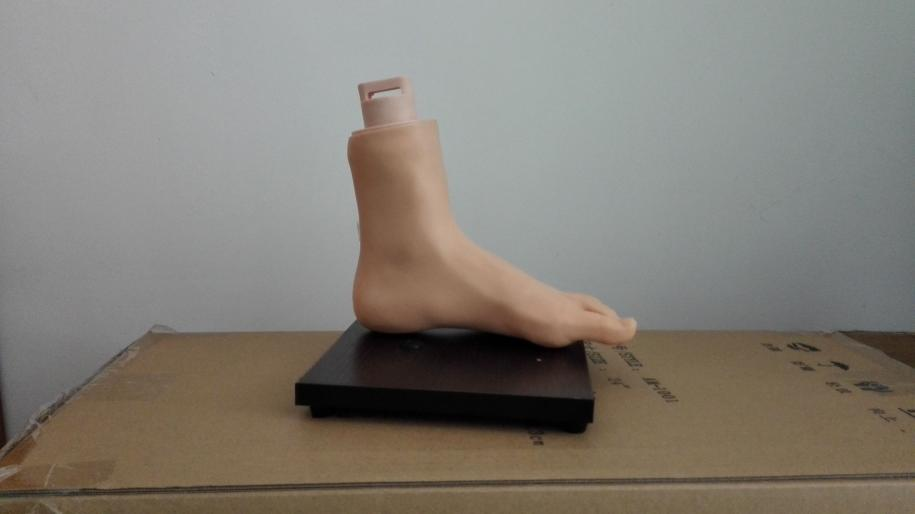Homepageпјҡ NEWS >> Analysis of simulation model of intravenous injection in lower limbs and feet
In medical nursing practice, intravenous injection of lower limbs and feet is a key skill, and its accuracy is directly related to the patient's therapeutic effect and safety. In order to improve the operational level of medical staff, the lower limb and foot intravenous injection simulation model has gradually become an important tool in the field of medical training. This article will deeply explore the application, advantages and future development trends of this model in medical practice.

The lower limb foot intravenous injection simulation model provides a safe and controllable practice environment for medical staff by simulating the real human lower limb foot vein structure. This model is not only highly simulated and can accurately restore the vein direction and distribution of the lower limbs and feet, but is also reusable, allowing medical staff to perform repeated practical operations at different times and in different scenarios.
The application of this model has brought many benefits to medical staff. First of all, through simulation model training, medical staff can master the correct methods and techniques of intravenous injection and improve operational accuracy and efficiency. Secondly, the use of models reduces errors and complications that may occur in actual operations and improves patient safety. In addition, simulation models can also help medical staff build self-confidence and reduce tension and pressure in actual operations.
In addition to the above application advantages, the lower limb foot intravenous injection simulation model also has broad development prospects. With the continuous innovation and advancement of medical technology, future simulation models will be more intelligent and personalized. For example, by introducing virtual reality technology, the model can simulate more realistic operating scenarios, allowing medical staff to immerse themselves in a real medical environment for training. At the same time, the model can also be personalized according to the different levels and needs of medical staff to provide more targeted training programs.
In addition, the simulation model of intravenous injection in the lower limbs and feet also has potential value in the field of scientific research. Through in-depth research on the model, we can explore the impact of different injection methods, drug dosages, and patient factors on injection effects, providing more scientific guidance for clinical practice.
To sum up, the lower limb and foot intravenous injection simulation model plays an important role in medical practice. Its high degree of simulation, reusability and intelligent development trend make it an important tool in the field of medical training. With the continuous advancement of technology and the continuous expansion of application scenarios, we have reason to believe that this model will contribute more to the development of medical care in the future.